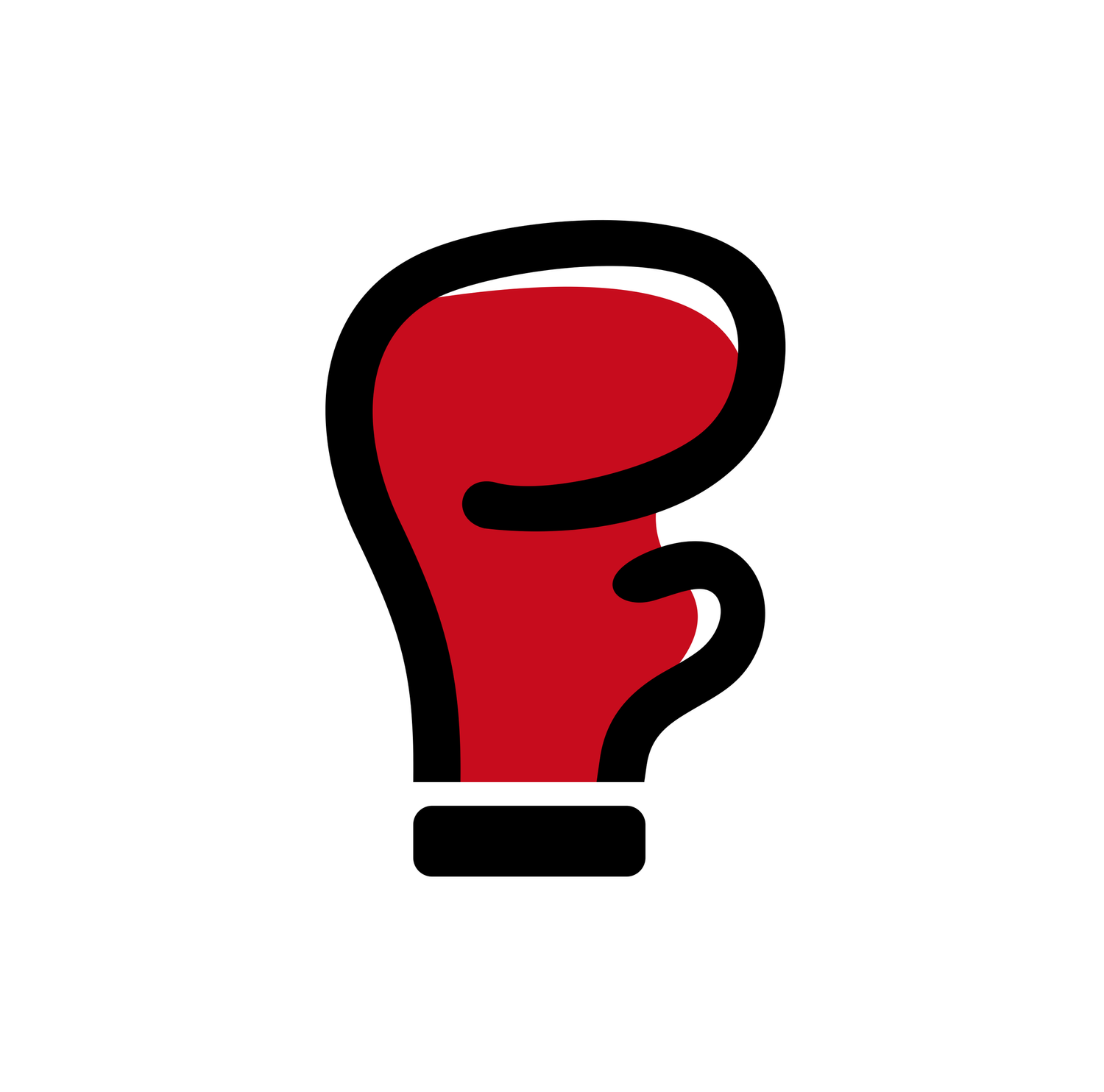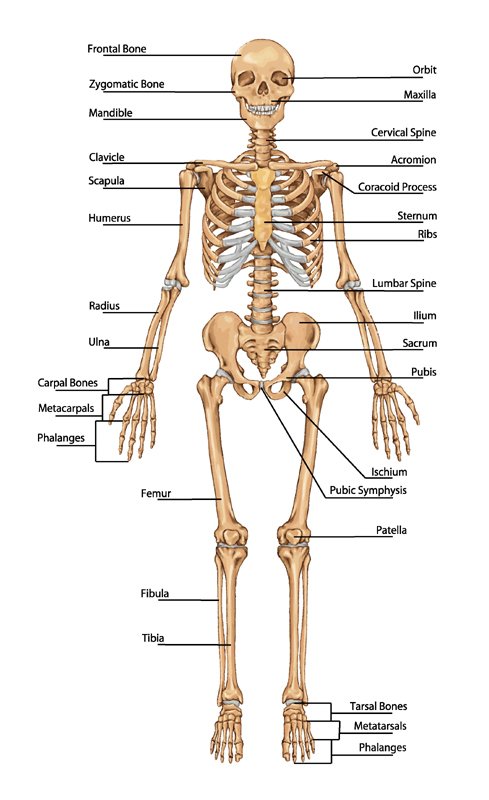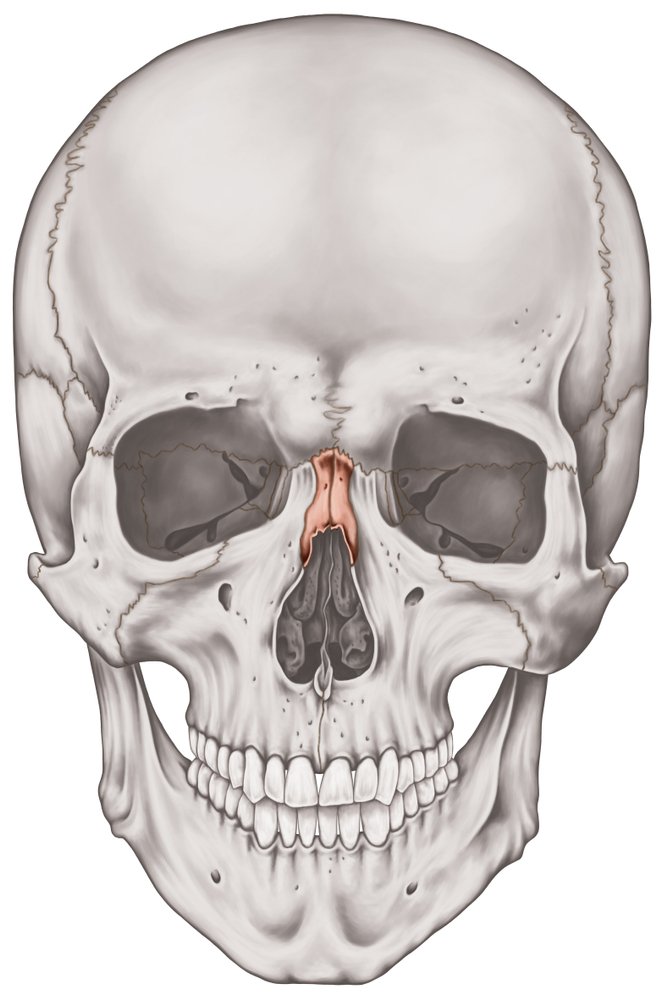The Skeletal System: A Journey into the Framework of the Human Body
How many bones are there in the human body, and how are they arranged? This guide is designed to be a valuable resource, providing you with information about the bones that form our skeletal system. Organized into categories based on their location and function, you'll find a comprehensive collection of bone names and images, allowing you to visualize their structure and position within the body. Whether you're a student, a health professional, or simply an anatomy enthusiast, this post will serve as a valuable reference
To aid in memorization and comprehension, I've also included mnemonics. These memory devices will help you remember bone names more effectively, making your learning experience even more enjoyable.
Anterior
Posterior
The human skeleton has around 206 to 214 bones, though the exact number depends on how fused bones and segments are counted.
These bones are arranged under two skeletal groups, the Axial and Appendicular skeletons, each of which contain sub-groups and further sub-groups:
The Axial Skeleton (80-88 bones)
-
Cranial (8)
Frontal
Parietal (2)
Occiput
Temporal (2)
Sphenoid
Ethmoid
Facial (14)
Maxilla (2)
Zygomatic (2)
Mandible
Nasal (2)
Inferior Nasal Concha (2)
Vomer
Palatine (2)
Lacrimal (2)
Middle Ear (6)
Malleus (2)
Incus (2)
Stapes (2)
Hyoid (1)
Hyoid
-
Cervical (7)
C1
C2
C3
C4
C5
C6
C7
Thoracic (12)
T1
T2
T3
T4
T5
T6
T7
T8
T9
T10
T11
T12
Lumbar (5)
Sacrum (1 or 5 fused)
Coccyx (1 or 3-5 fused)
-
Rib Cage (24)
R1 (true) (2)
R2 (true) (2)
R3 (true) (2)
R4 (true) (2)
R5 (true) (2)
R6 (true) (2)
R7 (false) (2)
R8 (false (2)
R9 (false) (2)
R10 (false) (2)
R11 (false, floating) (2)
R12 (false, floating) (2)
Sternum (1)
Manubrium (segment)
Gladiotis (segment)
Xiphoid process (segment)
The Appendicular Skeleton (126 bones)
-
Shoulders (4)
Scapula (2)
Clavicle (2)
Arms (6)
Humerus (2)
Radius (2)
Ulna (2)
Wrists/Carpals (16)
Scaphoid (2)
Lunate (2)
Triquetrum (2)
Pisiform (2)
Trapezium (2)
Trapezoid (2)
Capitate (2)
Hamate (2)
Hands (38)
Metacarpals I-V (10)
Proximate Phalanges I-V (10)
Intermediate Phalanges II-V (8)
Distal Phalanges I-V (10)
-
Pelvis (2)
Hip Bone (2)
Legs (8)
Femur (2)
Patella (2)
Tibia (2)
Fibula (2)
Ankles/Tarsals (14)
Calcaneus (2)
Talus (2)
Navicular (2)
Cuboid (2)
Medial Cuniform (2)
Intermediate Cuneiform (2)
Lateral Cuniform (2)
Feet (38)
Metatarsals I-V (10)
Proximate Phalanges I-V (10)
Intermediate Phalanges II-V (8)
Distal Phalanges I-V (10)
Mnemonics
Cranial Bones
Fiercely Powerful Orangutans Tackle Strong Elephants:
Frontal (Latin frons "brow, forehead")
Parietal (Latin parietalis "of walls")
Occipital (Latin ob "in back of" + caput "head")
Temporal (Latin temporalis "of time”)
Sphenoid (Greek sphen "a wedge" + eidos "form")
Ethmoid (Greek ethmos “a sieve”)
Facial Bones
Many Zany Merry Nudists Like Very Pretty Images:
Maxilla (Latin maxilla "upper jaw")
Zygomatic (Greek zygoma, from zygon "yoke")
Mandible (Latin mandere "to chew")
Nasal (Latin nasus "nose, the nose, sense of smell")
Lacrimal (Latin lacrima, lacryma "a tear")
Vomer (Latin vomer "plowshare")
Palatine (Latin palatinus "of the palace")
Inferior Nasal Concha (Latin concha "shellfish, mollusk")
Middle Ear Bones
Meanings Include Sound:
Malleus (Latin malleus "a hammer")
Incus (Latin incus "anvil")
Stapes (Latin stapes "stirrup")
Hyoid Bone
Humanoid Hyoid:
Hyoid (Greek hyoeides "shaped like the letter U")

Cervical Bones
Breakfast at 7am:
Cervical (Latin cervix "the neck, nape of the neck")







Thoracic Bones
Lunch at 12pm:
Thoracic (Latin thorax "the breast, chest; breastplate")












Lumbar Bones
Dinner at 5pm:
Lumbar (Latin lumbus "loin")





Sacral Bone(s)
Sacred hours between 1-5am:
Sacrum (Latin sacrum, neuter of sacer "sacred")

Coccyx Bone(s)
Cuckoo between 1-3-5am:
Coccyx (Greek kokkyx "cuckoo")

Rib Cage
Ribs at 12pm:
Rib (Old English ribb "a rib; one of a series of long, slender, curved bones of humans and animals, forming a kind of cage or partial enclosure for the chief organs")
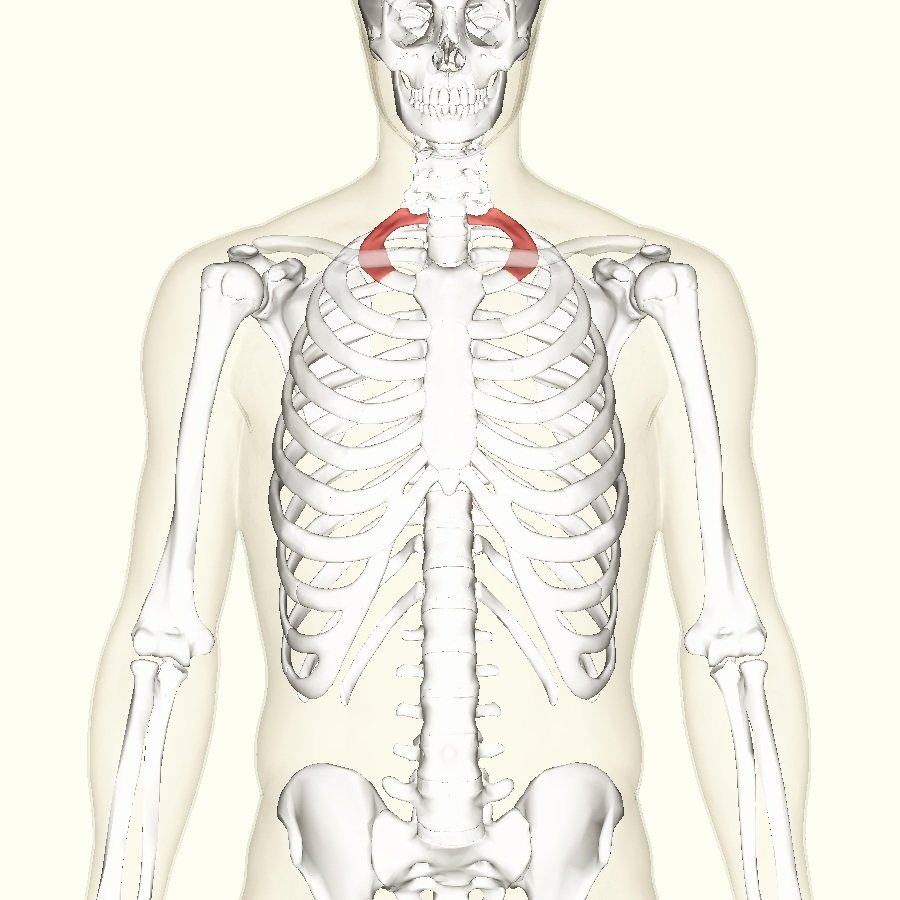




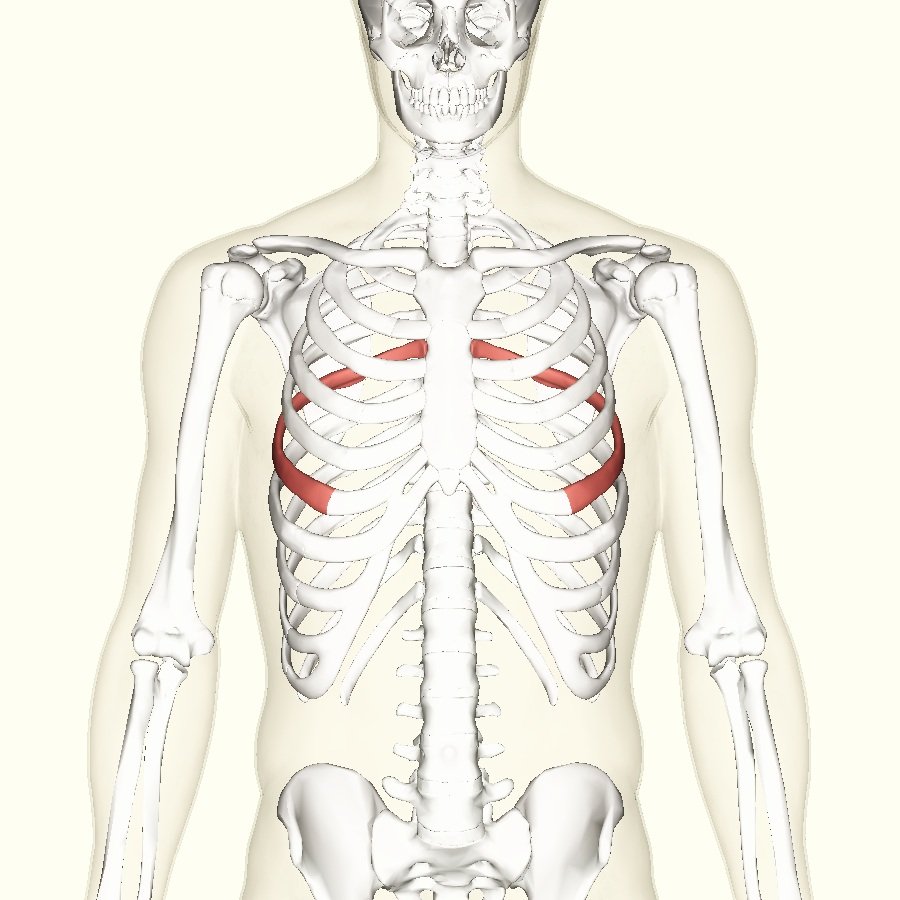






Sternum
Mighty Gladiator’s eXcalibur:
Manubrium (Latin manubrium "handle, hilt")
Gladiotis (Latin gladiolus "wild iris, sword-lily," literally "small sword")
Xiphoid Process (Greek xiphos "a sword," + Latin processus "a going forward, advance, progress")
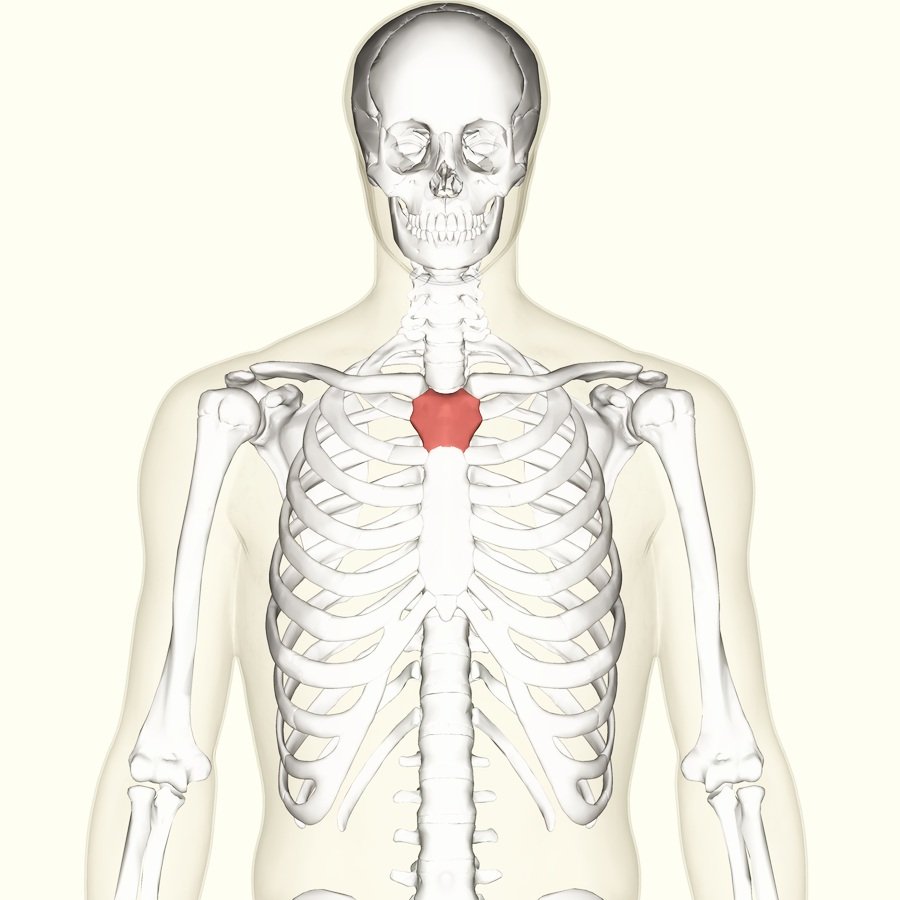

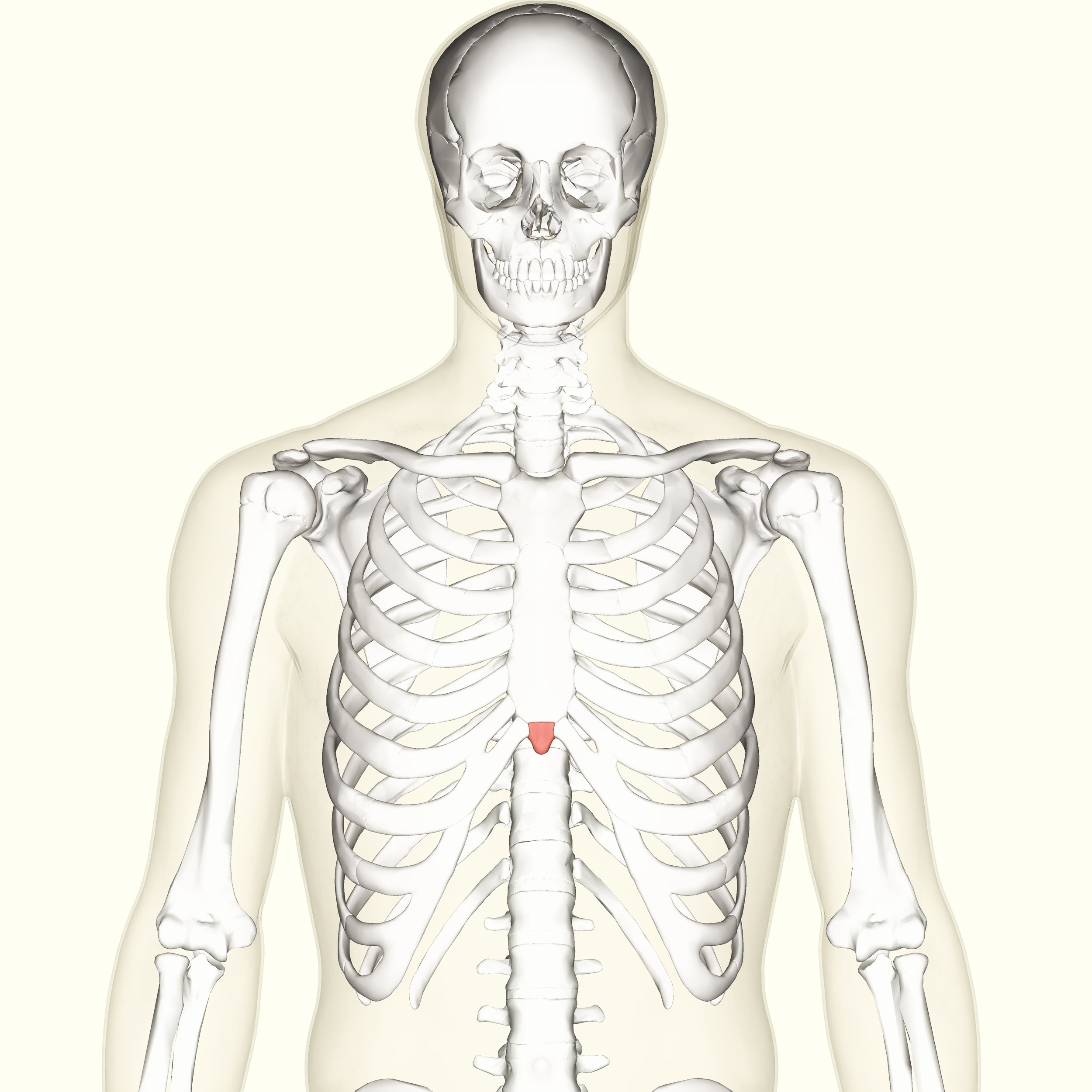
Shoulder Bones
Shoulder-blade, Collarbone:
Scapula (Latin scapulae "shoulders, shoulder blades," perhaps originally "spades, shovels")
Clavicle (Latin clavicula, literally "small key, bolt")


Arm Bones
Humorous Radars Underneath:
Humerus (Latin humerus, a common spelling of umerus "shoulder")
Radius (Latin radius "staff, stake, rod; spoke of a wheel; ray of light, beam of light; radius of a circle")
Ulna (Latin ulna "the elbow")



Wrist Bones (Carpals)
She Likes To Play, Try To Catch Her:
Scaphoid (Latin scaphoides "boat-shaped")
Lunate (Latin lunatus "half-moon shaped,")
Triquetrum (Latin triquetrus "having three corners)
Pisiform (Latin pīsum "pea")
Trapezium (Greek trapezion literally "a little table," from tra- "four" + peza "foot, edge")
Trapezoid (Greek trapezoeides "trapezium-shaped," from trapeza, literally "table" + -oeides "shaped")
Capitate (Latin capitatus "headed," from caput "head")
Hamate (Latin hamatus ‘hooked’, from hamus ‘hook’)
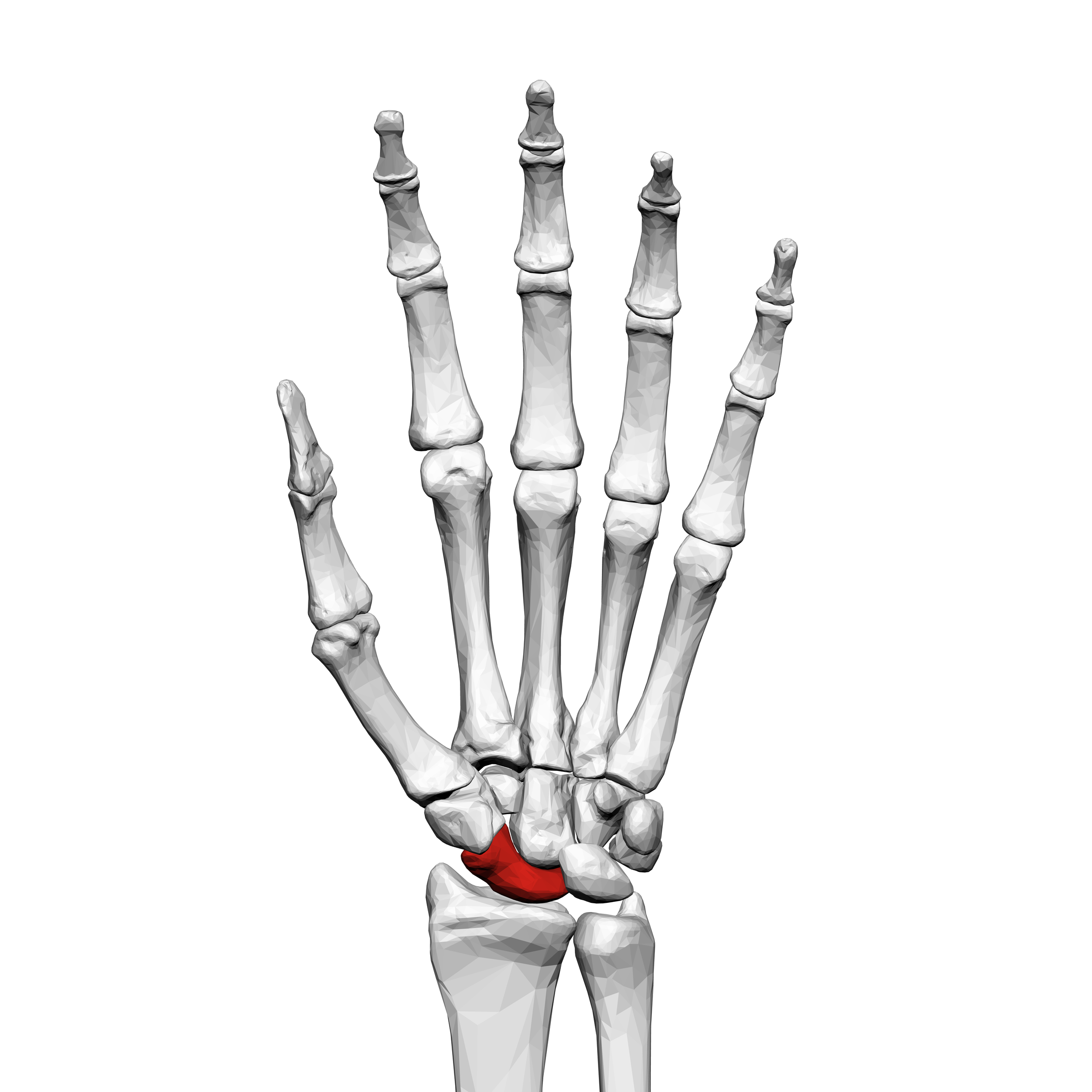
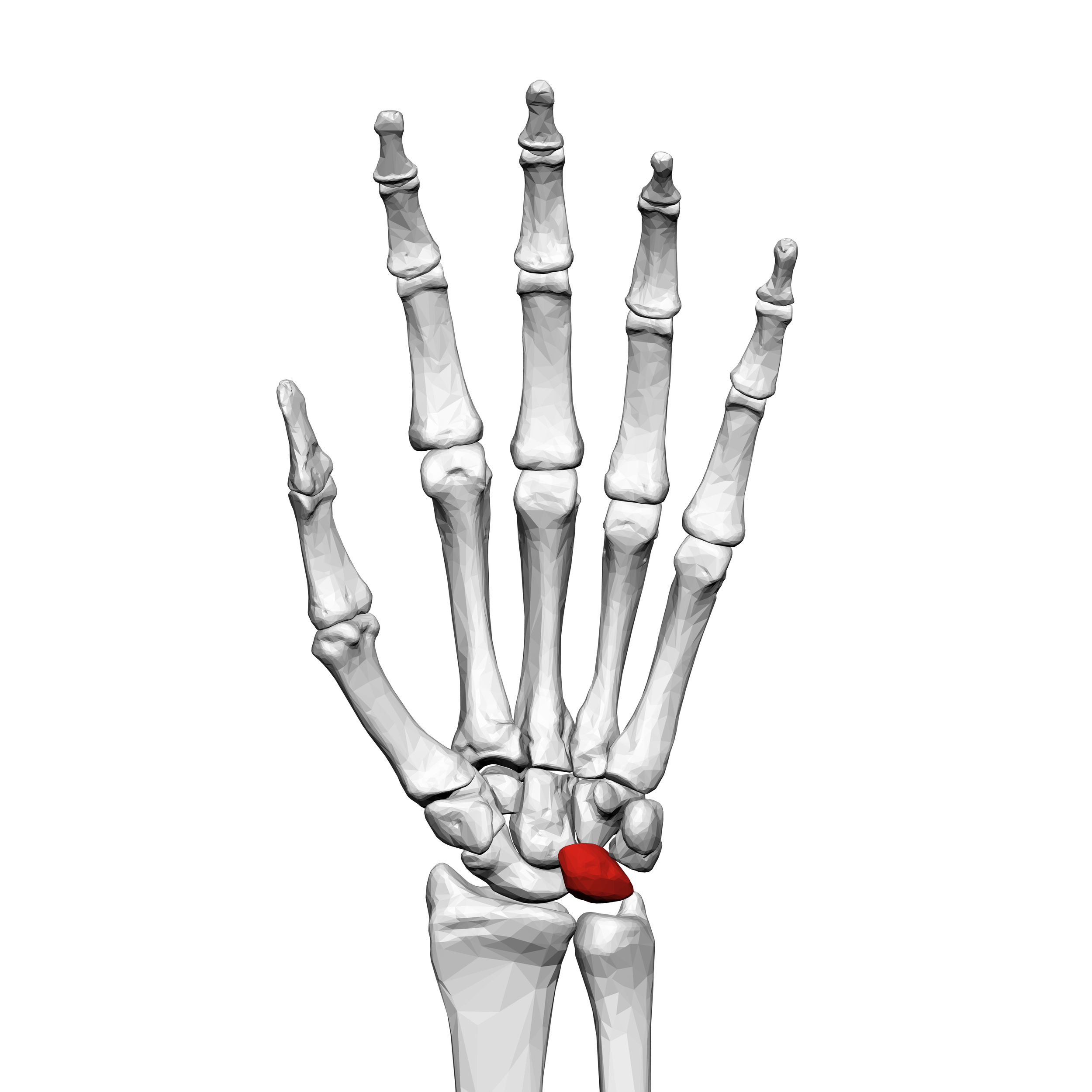
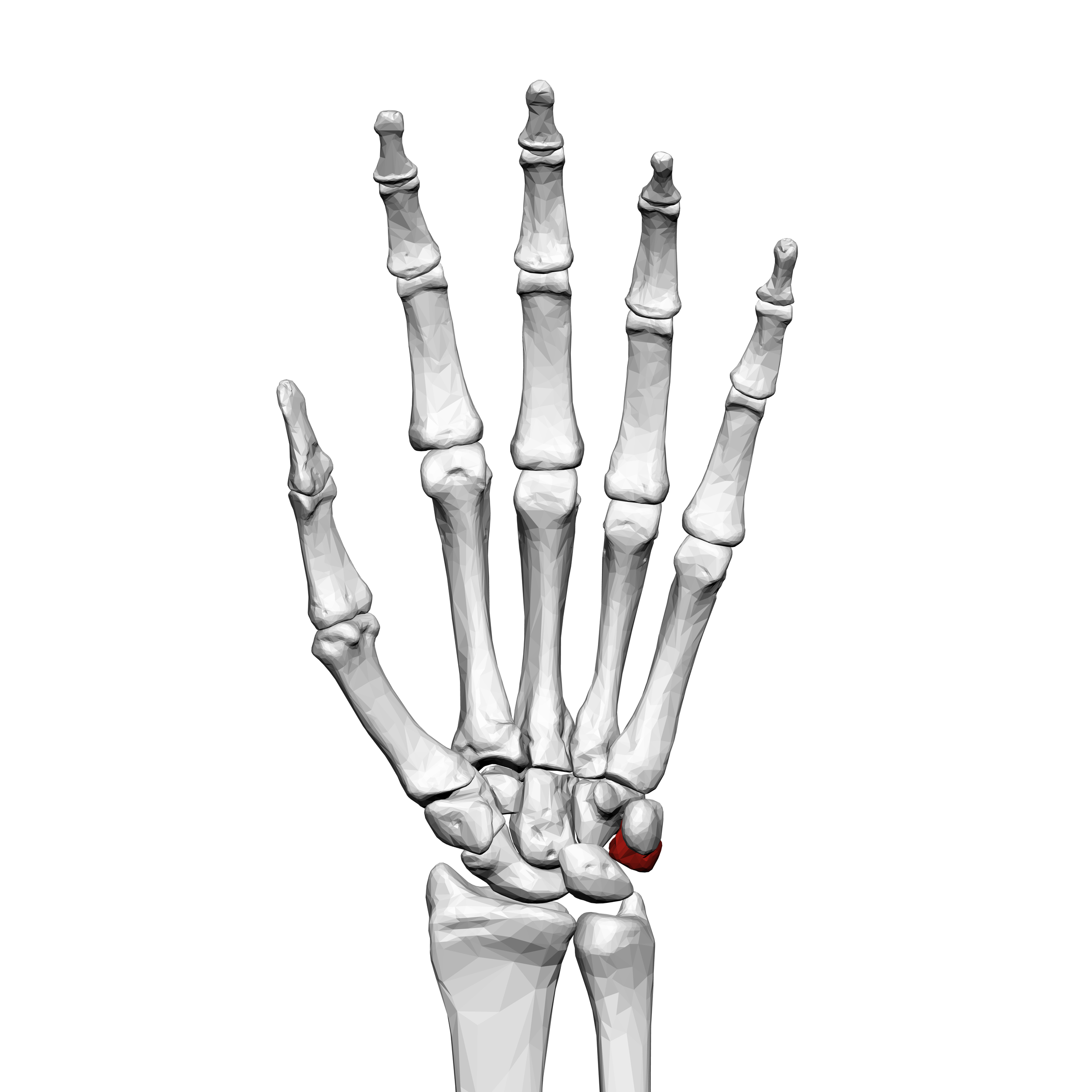




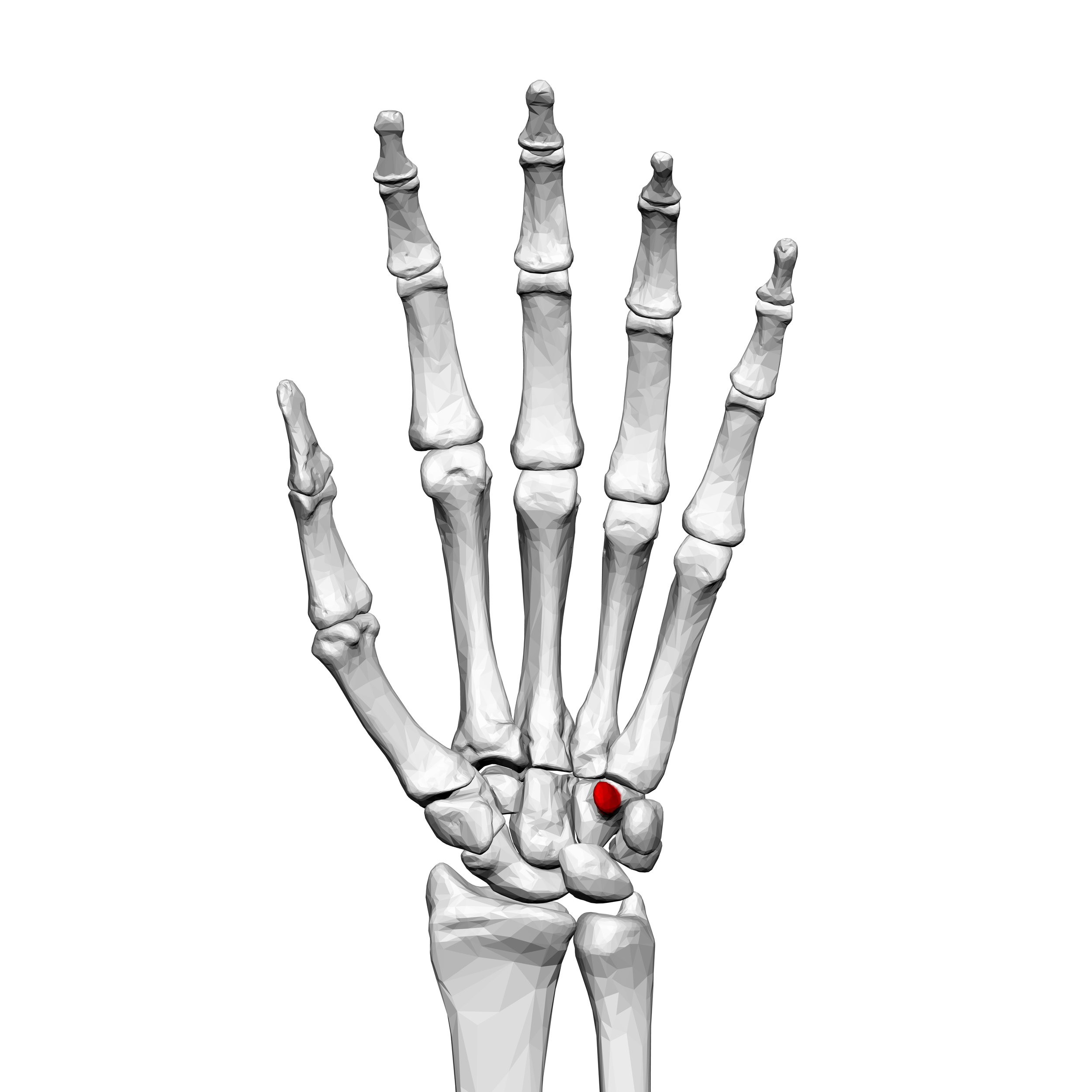
Hand Bones
Index finger is 2, Middle finger is 3:
Carpal (Latin carpalis, from carpus "wrist")
Phalanges (Greek phalanx "line of battle, battle array")
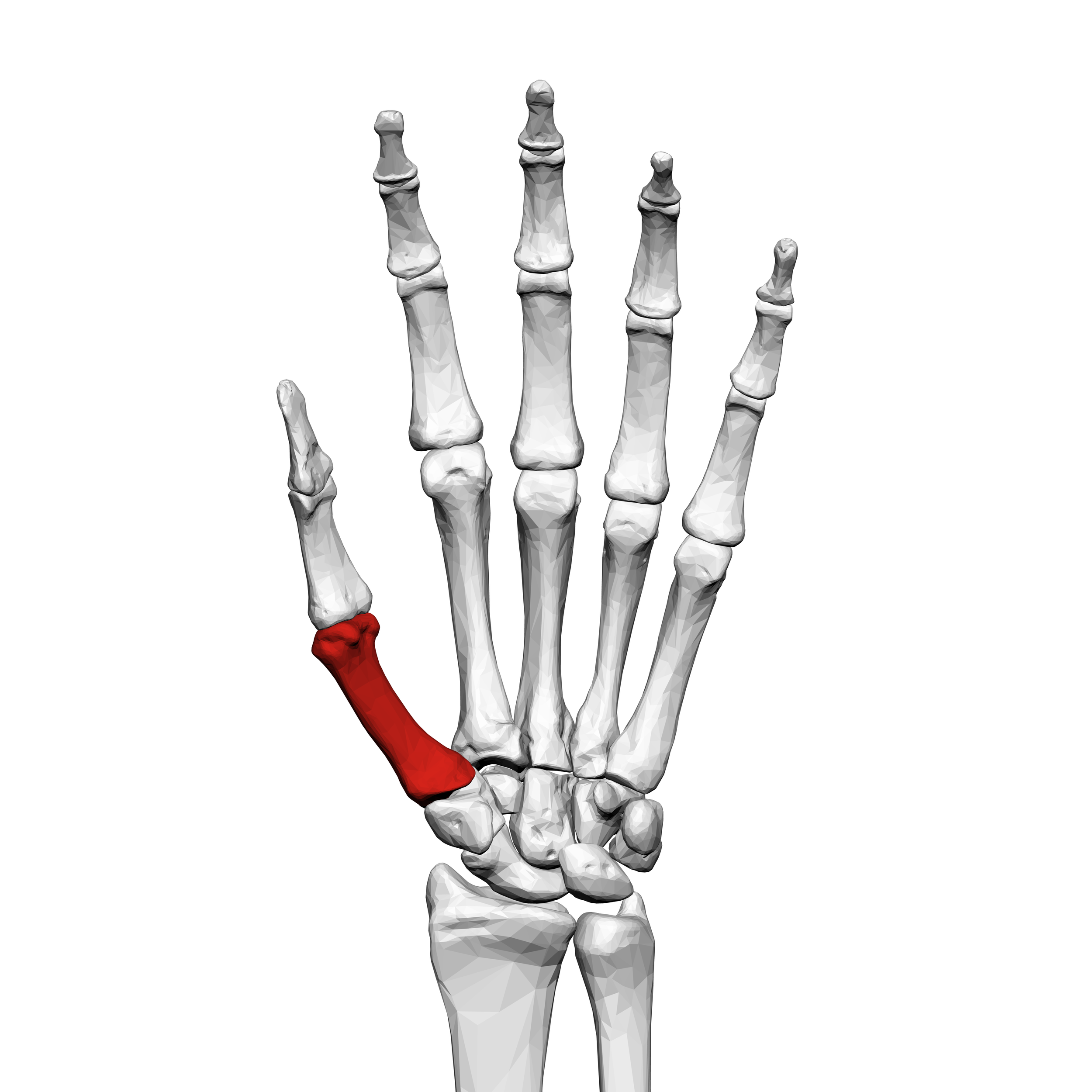
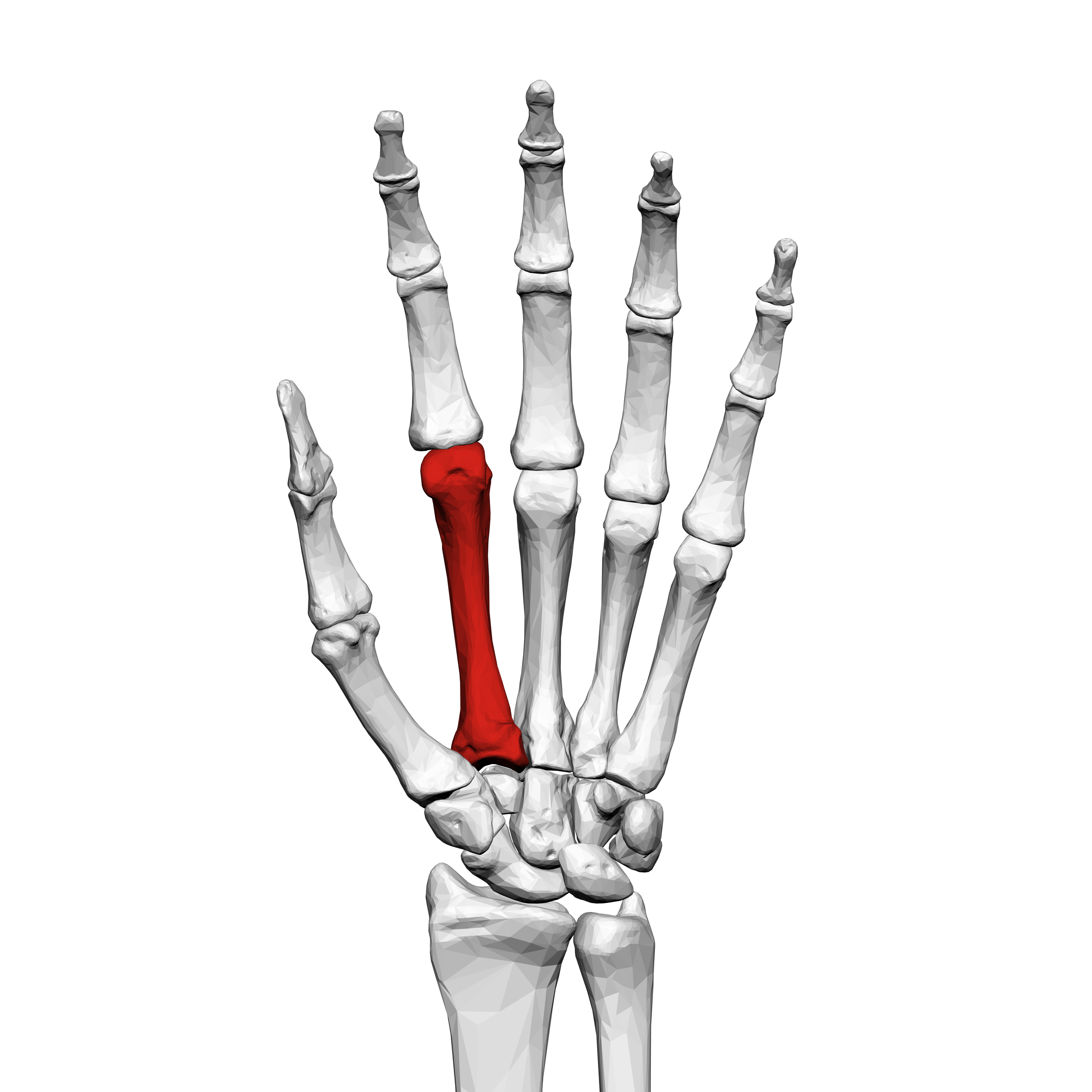
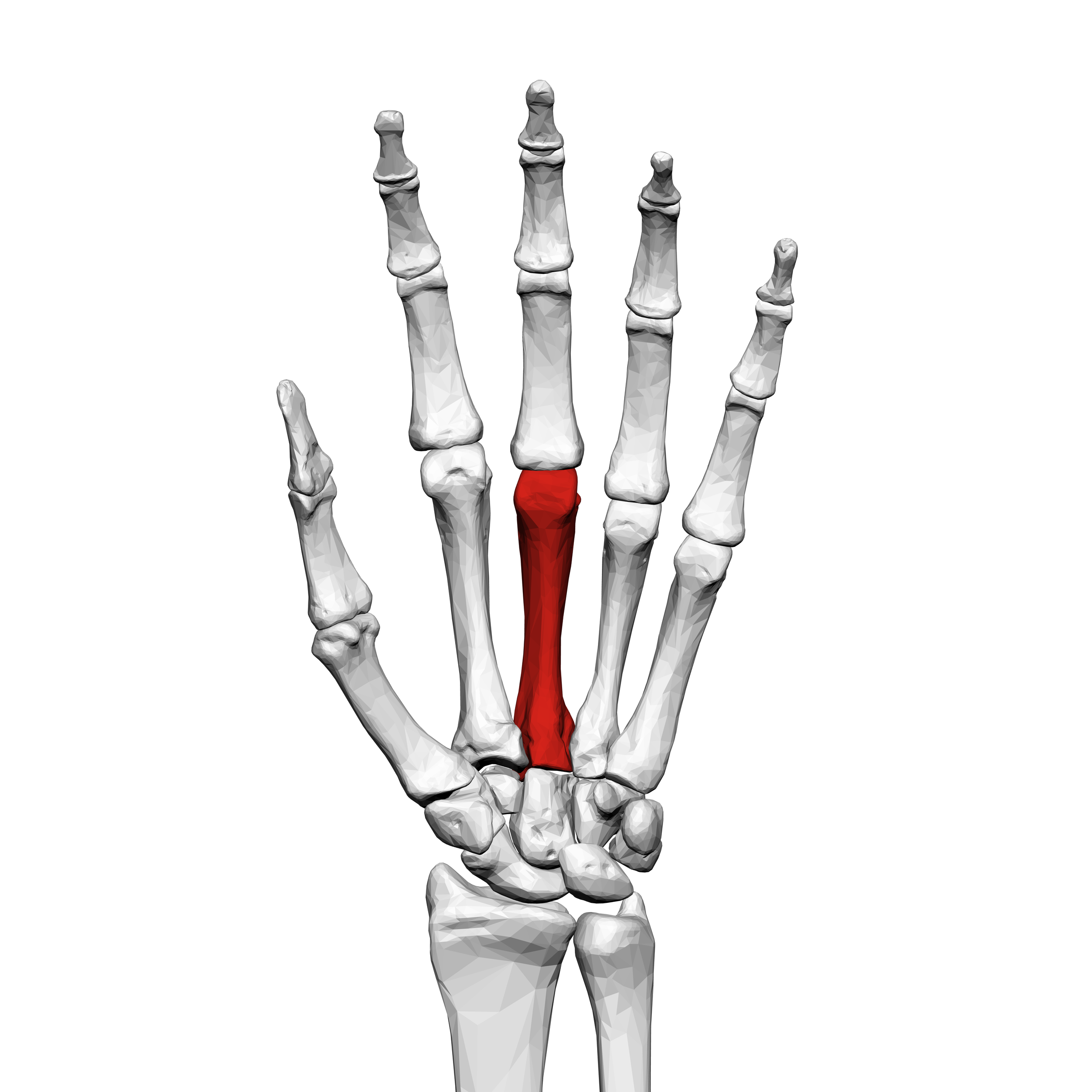
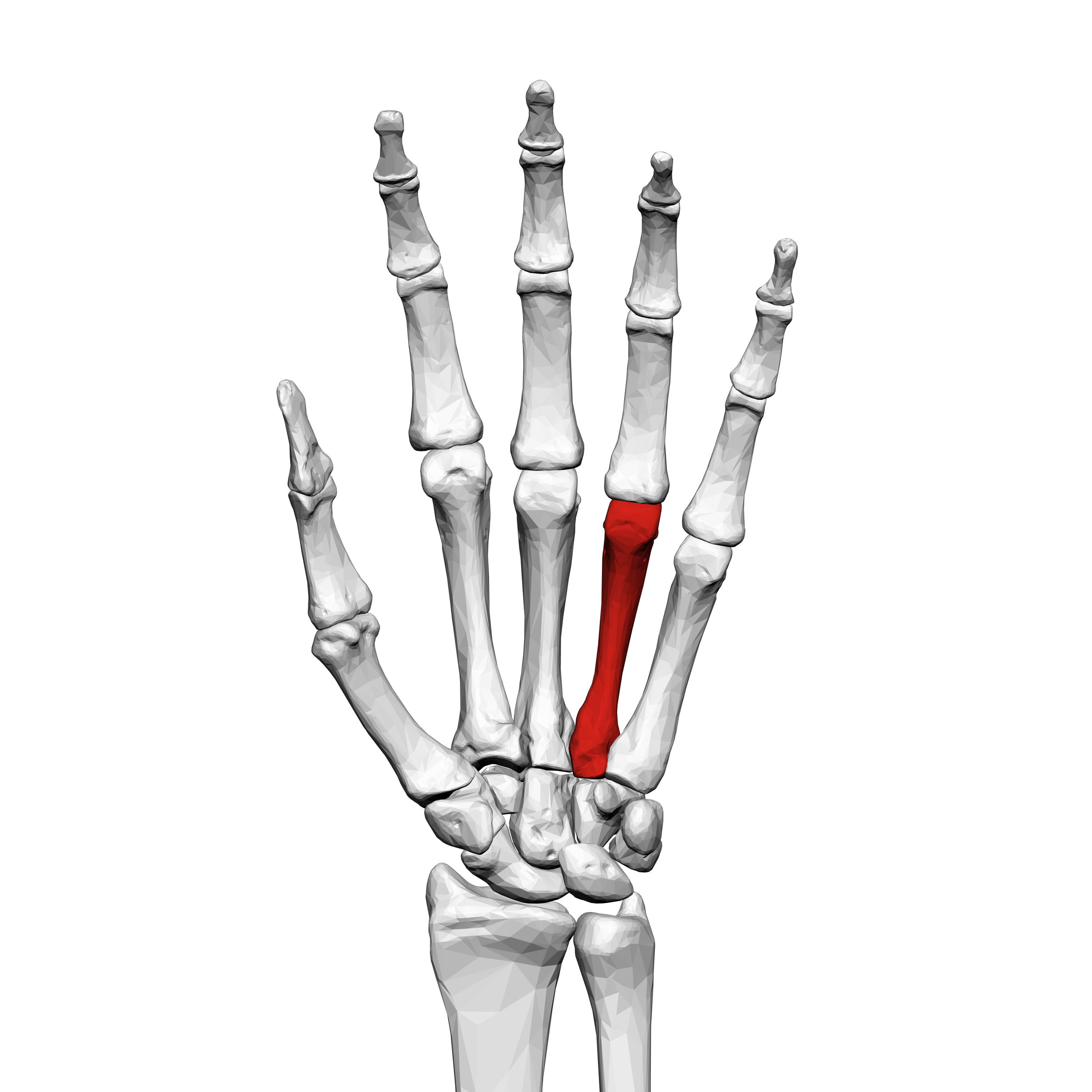
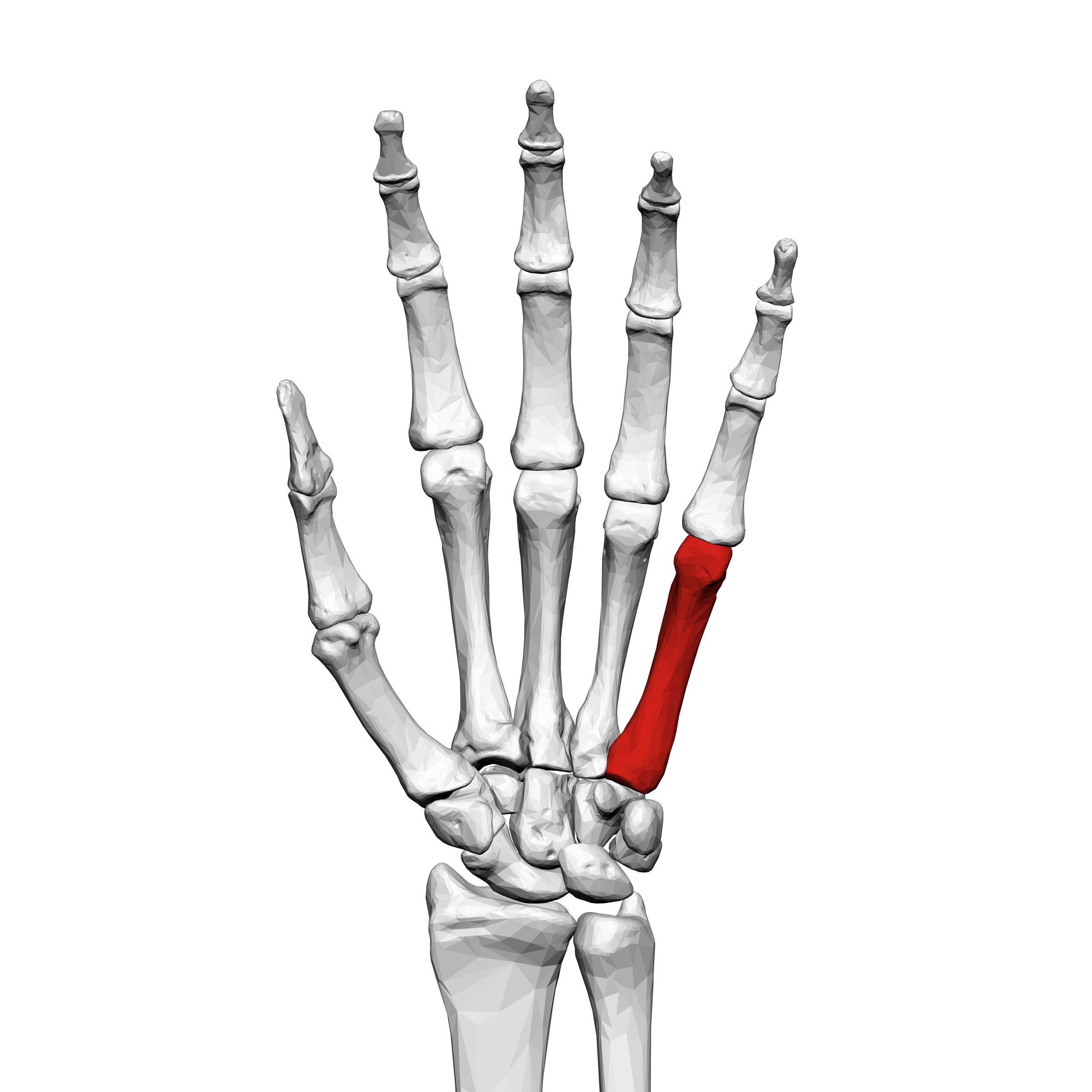
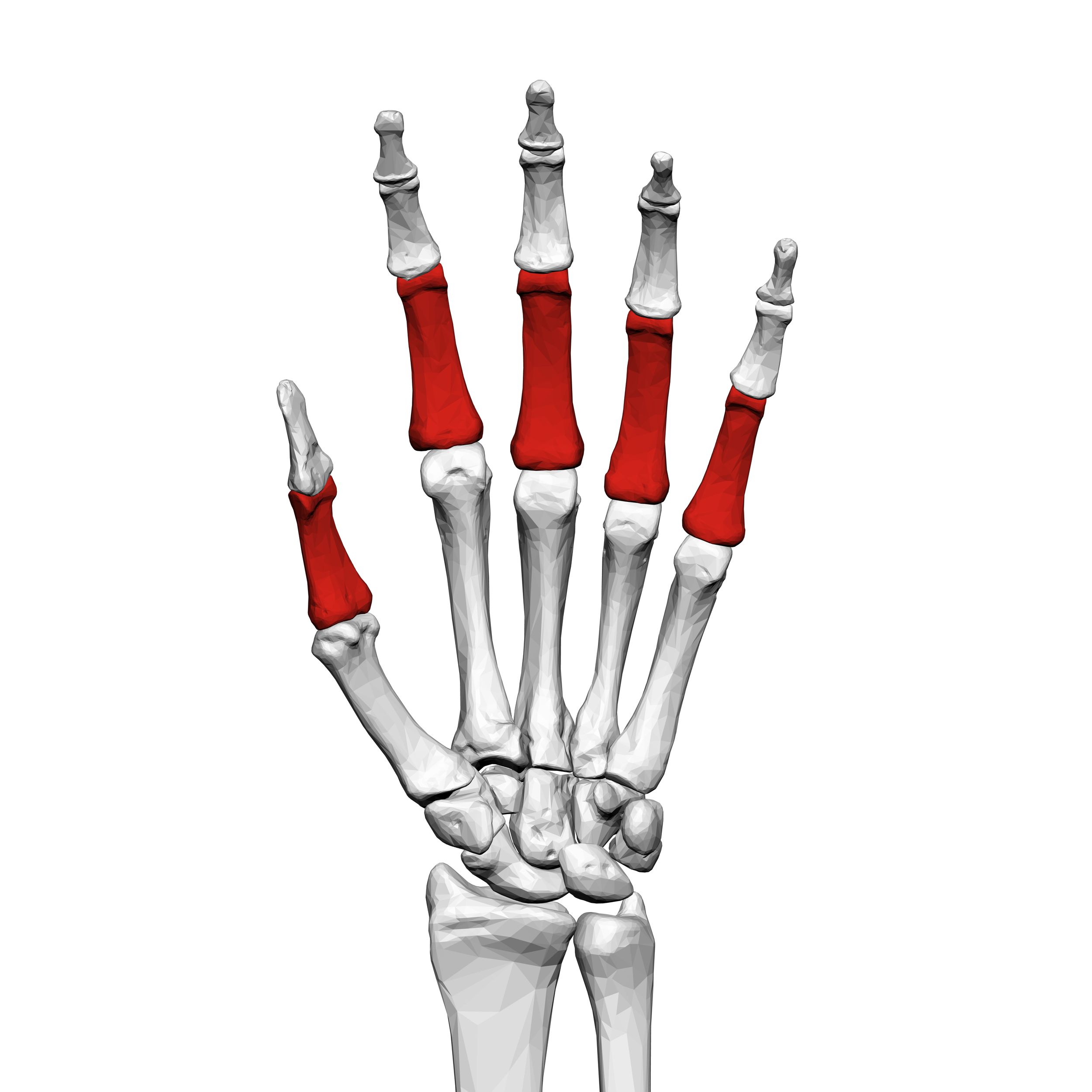
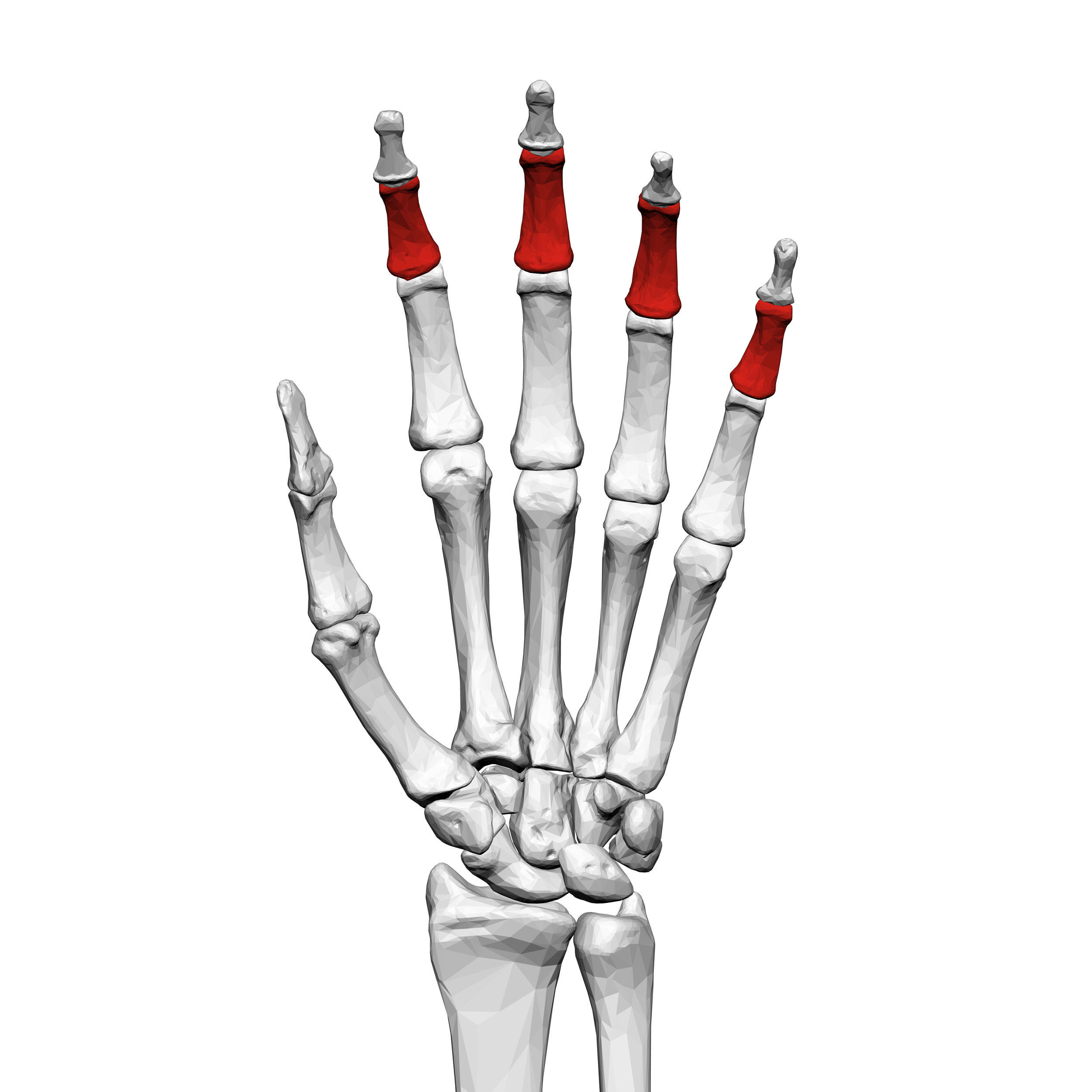
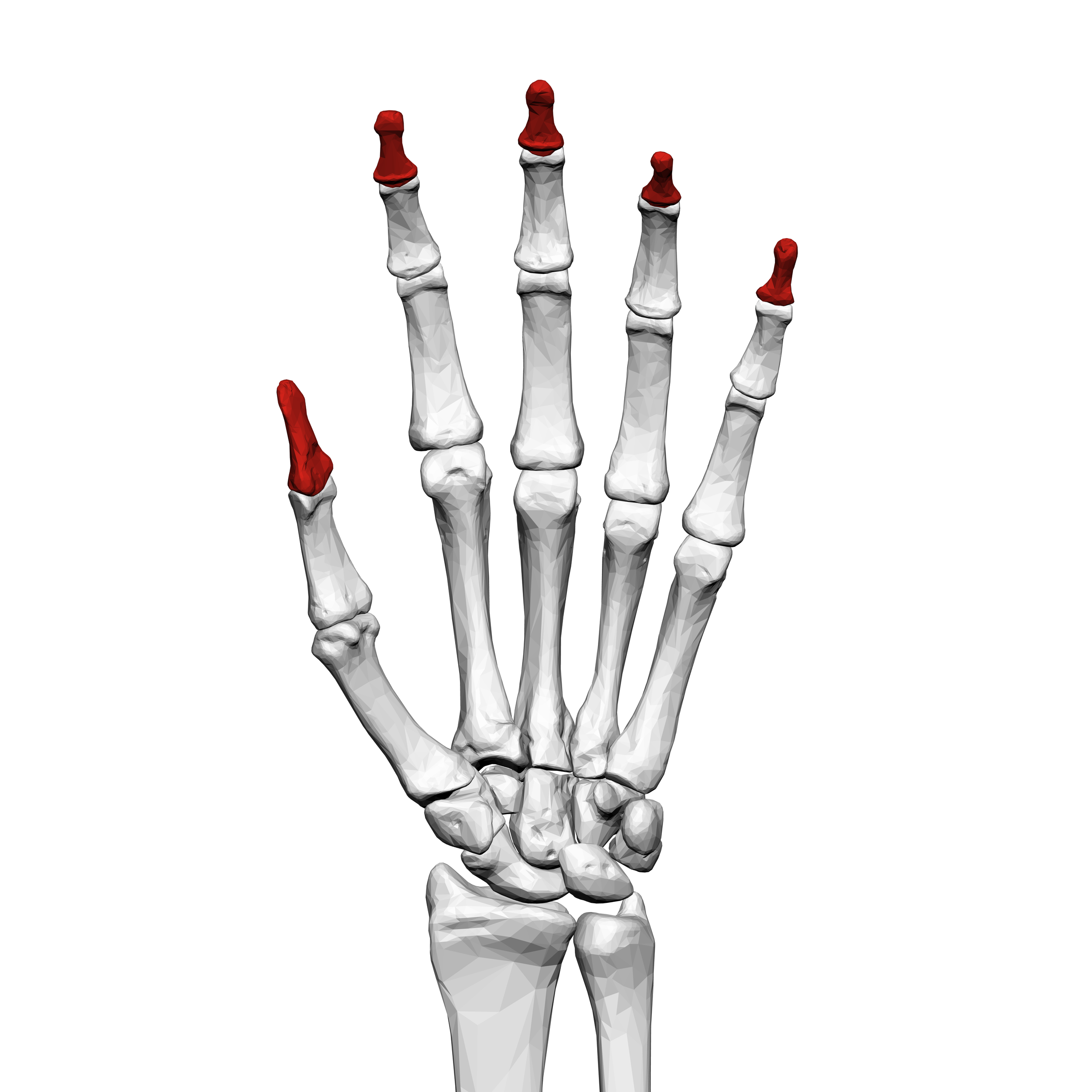
Pelvis Bones
Mnemonic (for sites on the bone):
Ilium ‘illuminated’ hips
Ischium ‘itchy’ sit bones
Pubis ‘pubic’ bone
Etymology:
Pelvis (Latin peluis "basin")

Leg Bones
Feline Pranksters Tell Fibs:
Femur (Latin femur "thigh, upper part of the thigh")
Patella (Latin patella "small pan or dish”)
Tibia (Latin tibia "shinbone," also "pipe, flute")
Fibula (Latin fibula "clasp, brooch; bolt, peg, pin")




Ankle Bones (Tarsals)
Calcaneus like ‘callus’, Talus like ‘talons’:
Calcaneus (Latin (os) calcaneum "bone of the heel," from calcem "heel")
Talus (Latin talus "ankle, anklebone, knucklebone", related to taxillus "a small die, cube")


Foot Bones
Never Cease Chasing The Prize:
Navicular (Latin navicularis "pertaining to a boat," from navicula, diminutive of navis "ship")
Cuboid (Greek kybos "a six-sided die")
Cuniform (Latin cuneus "a wedge, wedge-shaped thing")
Tarsal (Greek tarsos "ankle, sole of the foot, rim of the eyelid," originally "flat surface, especially for drying")
Phalanges (Greek phalanx "line of battle, battle array")



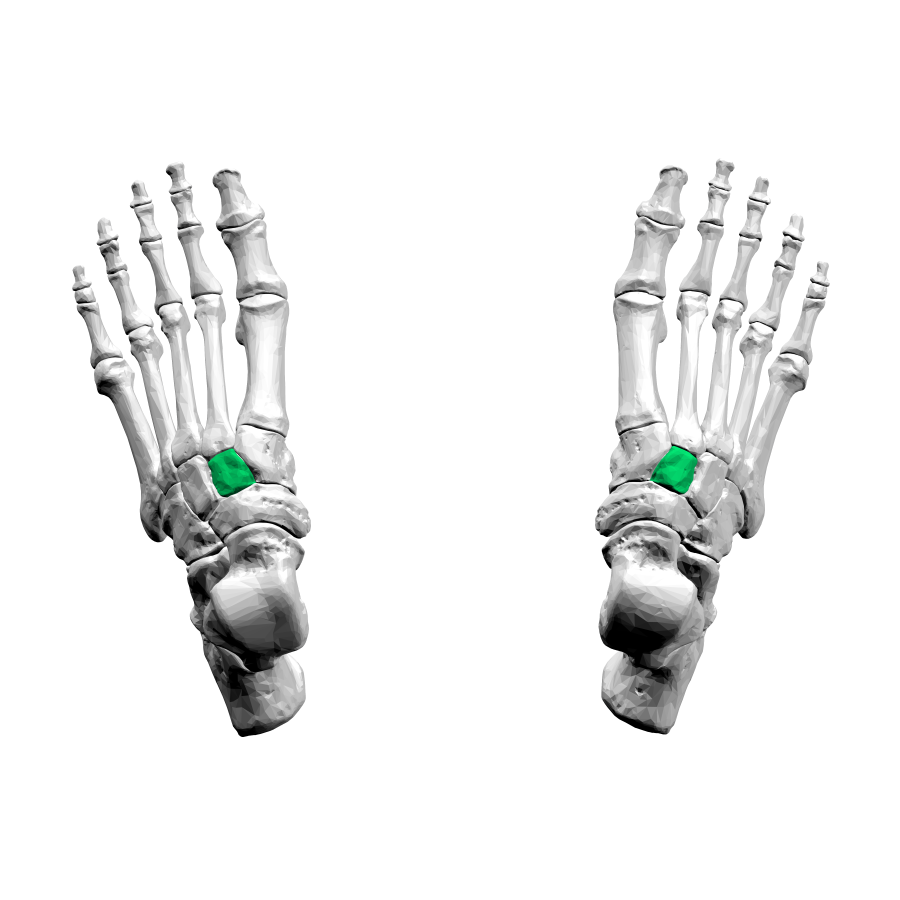









References:
Etymonline.com. 2022. Etymonline - Online Etymology Dictionary. [online] Available at: <https://www.etymonline.com/> [Accessed 20 January 2022].
FCAT (Federative Committee on Anatomical Terminology), (1998) Terminologia Anatomica: International Anatomical Terminology, Stuttgart, Thieme Publishing Group.
En.wikipedia.org. 2022. List of anatomy mnemonics - Wikipedia. [online] Available at: <https://en.wikipedia.org/wiki/List_of_anatomy_mnemonics> [Accessed 20 January 2022].
